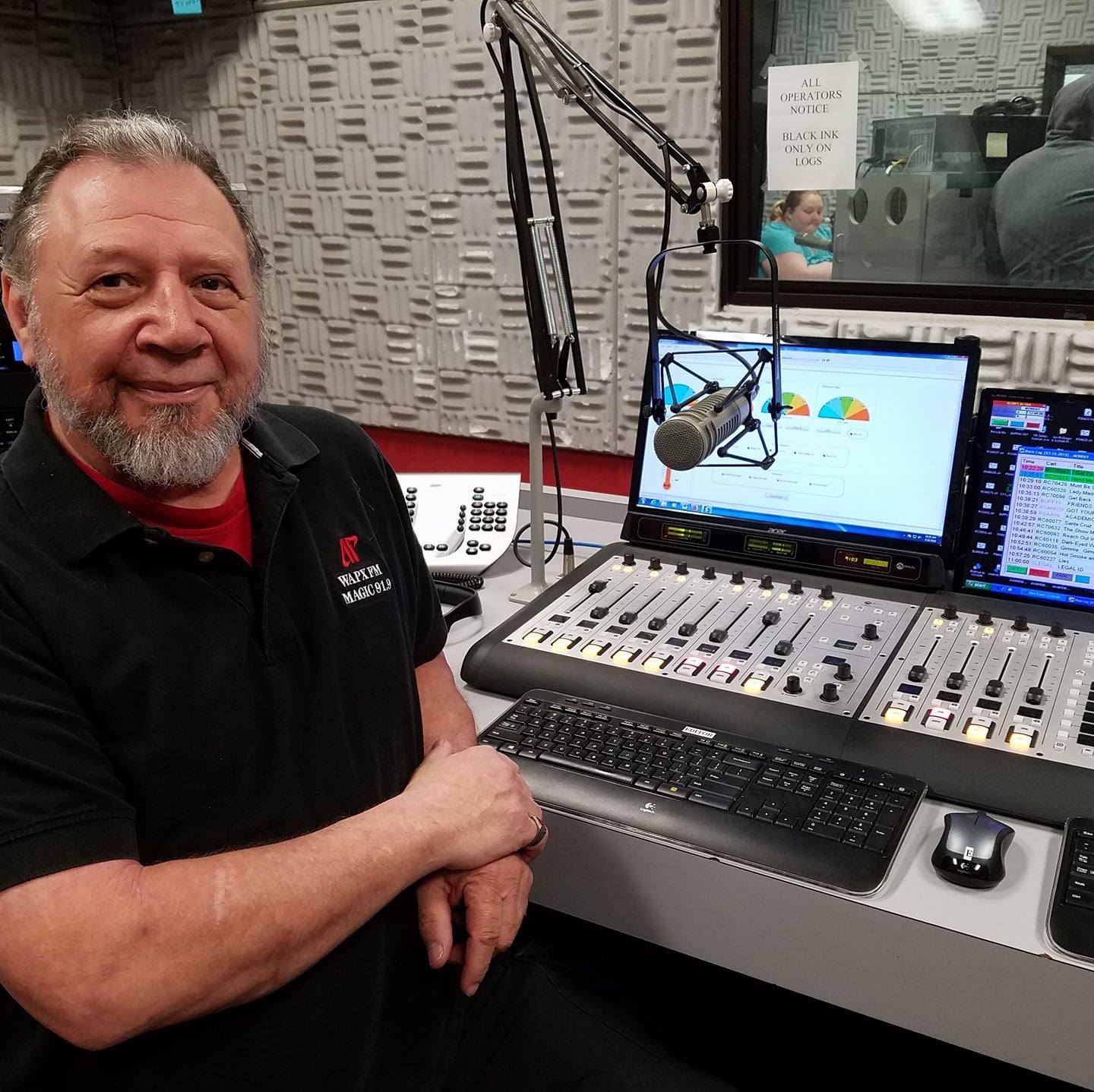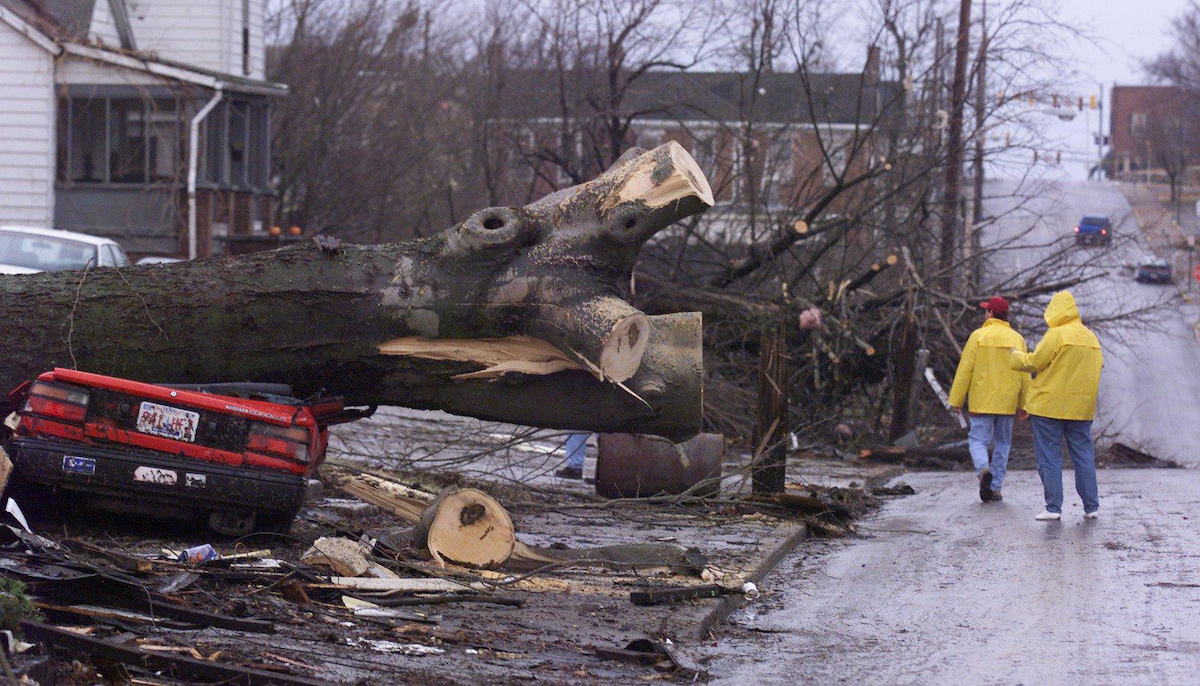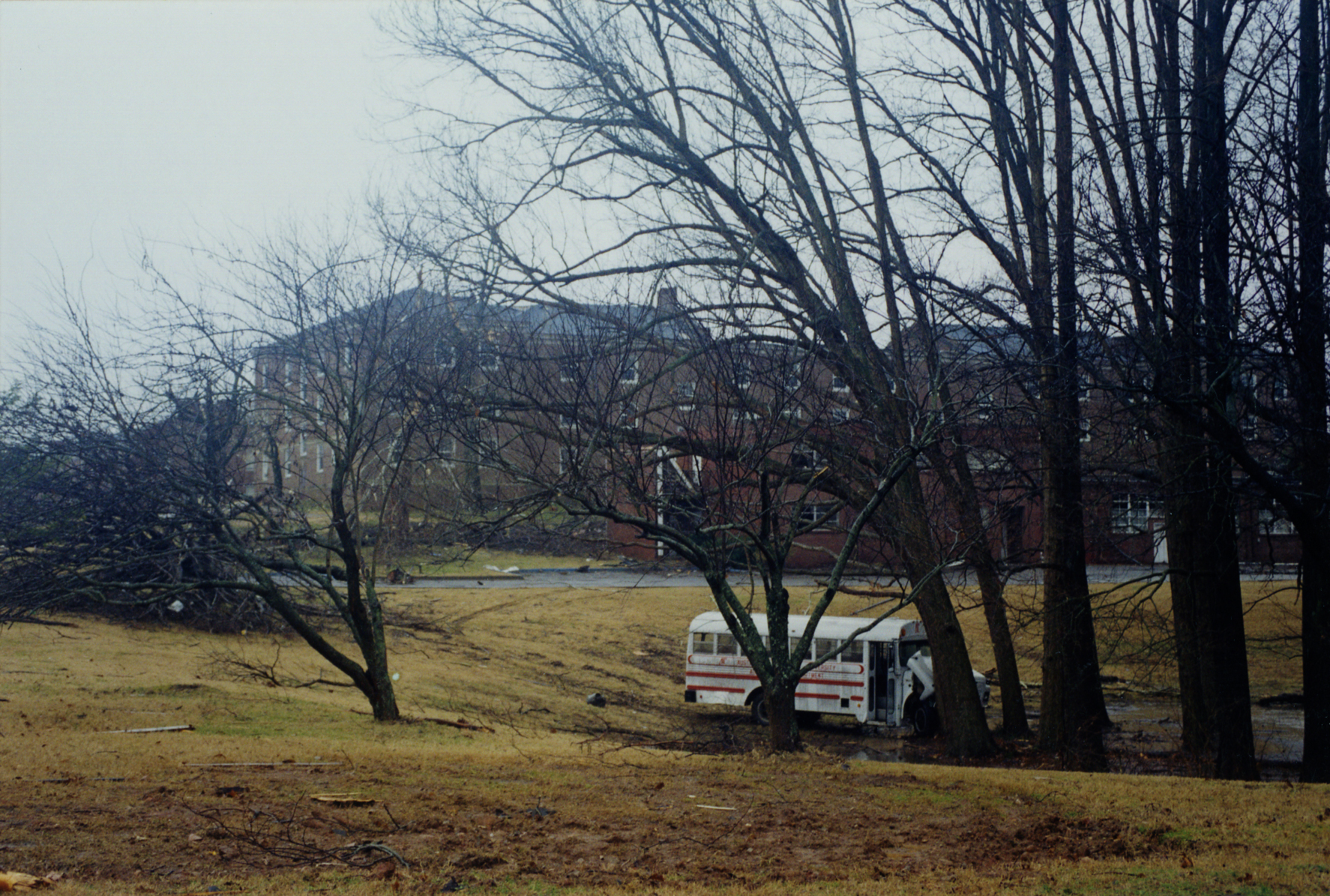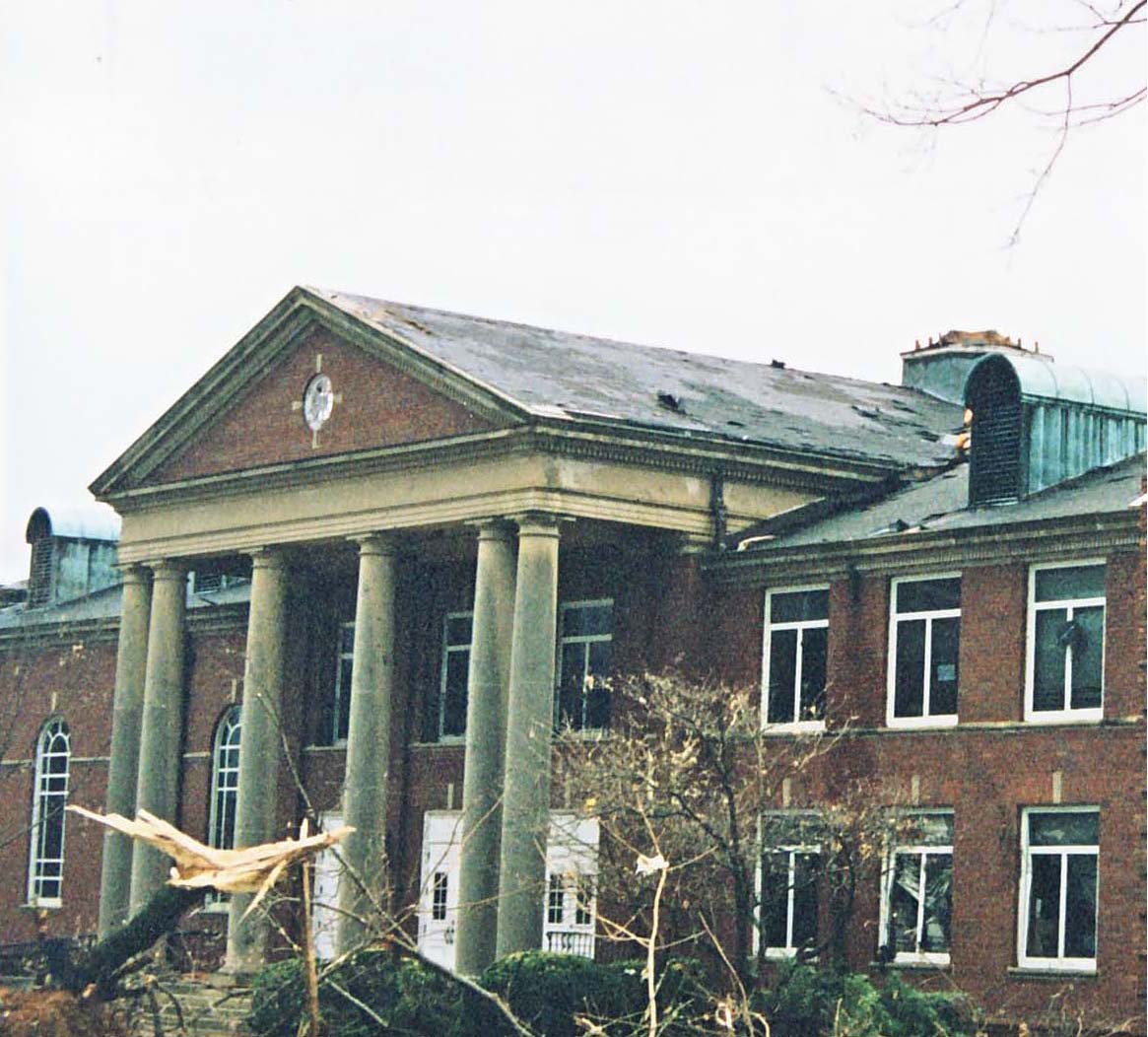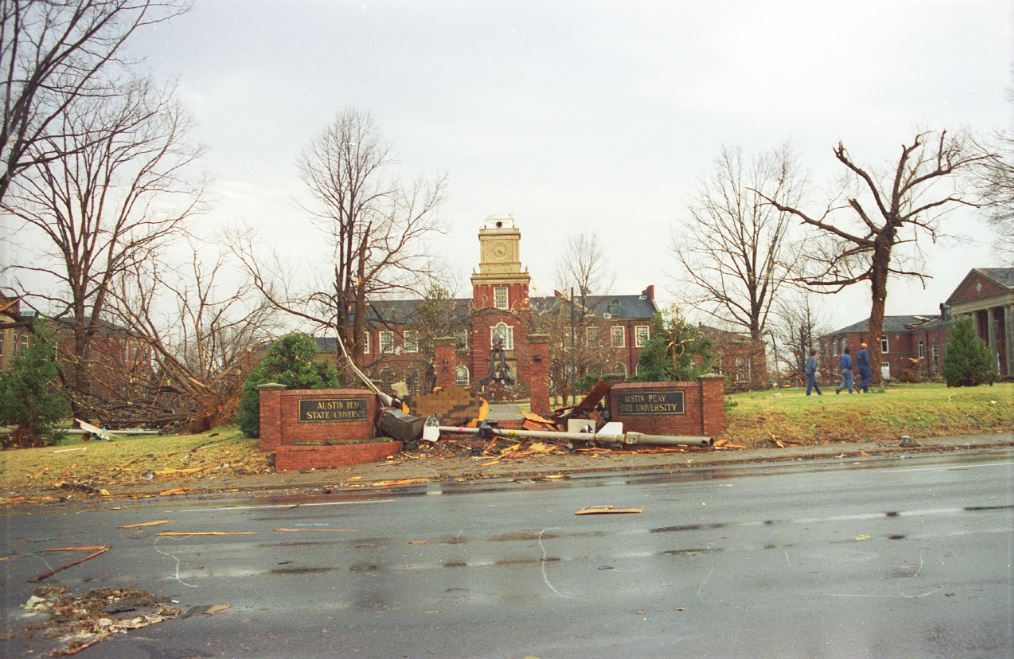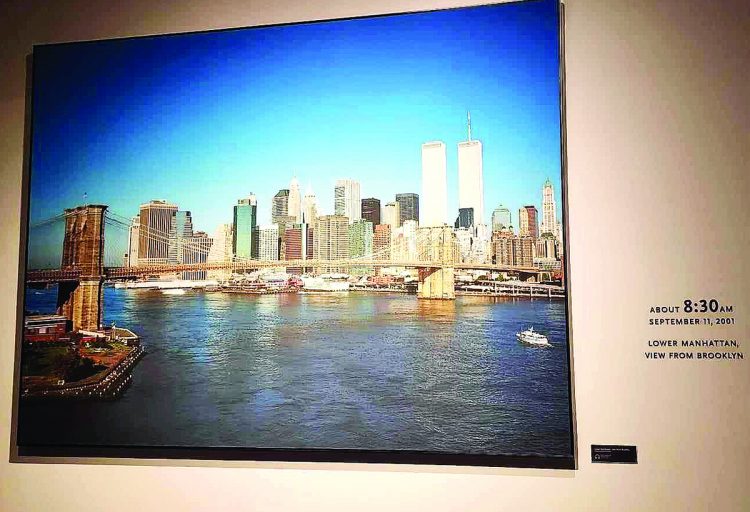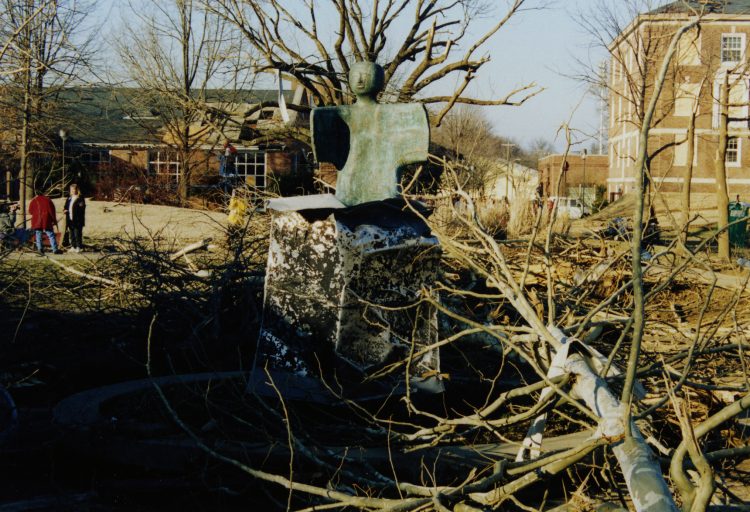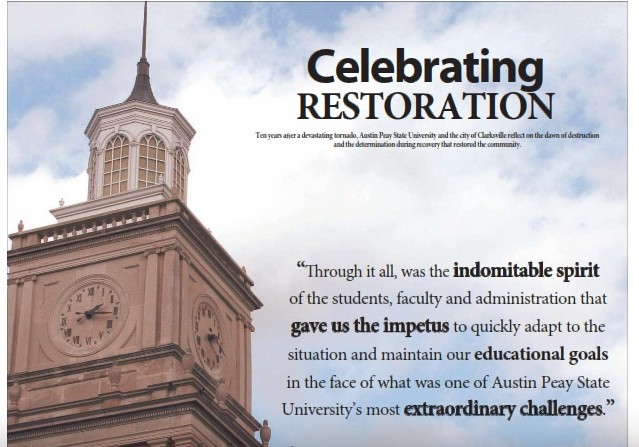When the F3 tornado ripped through parts of Montgomery County on Jan. 22, 1999, the sound of the oncoming storm “was as if you were standing right beside a train,” according to Austin Peay’s Communications Professor, David “Doc” von Palko.
As Doc recalls the day’s events through two decades of perspective, he marvels at how everyone survived and how Austin Peay was rejuvenated by this mega-catastrophe.

Dr. v in the control room of WAPX-FM
This storm dropped out of nowhere and ripped through parts of Clarksville with over 170 mph gale force winds just a few hours before sunrise.
The tornado caused the largest property damage ever recorded in the State of Tennessee, according to the Tennessean. Against high probabilities, there was no loss of life.
Doc was one of the first reporters on the scene and for the first few days made hourly reports on local radio and television via telephone. His radio station, WAPX, (von Palko was and still is the General Manager of our school’s radio station), was ‘fried” by the storm.
As he surveyed the initial damage from his Jeep, von Palko saw that the storm “had decimated the campus.” A satellite dish once secured to the old Morgan University Center was “crumpled up … balled up like a piece of paper” and discarded in front of the football field.
Windows were broken out across campus. “It looked like a deserted city,” von Palko said. At the urging of then APSU President Sal Rinella, volunteers quickly boarded them up and the plywood was painted and enlivened with art and designs.
These makeshift installations were fondly referred to as Sal Art. “They made the place look better, made it look fun”, von Palko recollected with a grin. “Sorta like Haight-Ashbury.”
Classes had to be postponed. New locations were found to replace damaged classrooms and dormitories. The WAPX team got back on the air in a week and a couple days.
In all, it is estimated that the storm wreaked over $17 million in property damage to the campus. In hindsight, von Palko says, “given that there was no loss of life, it was a real blessing”.
Rebuilding allowed for much-needed upgrades and equipment replacement. The campus received a facelift and an updating of the infrastructure that serves APSU today.
When asked whether the storm altered the course of his tenure here at APSU, Professor von Palko philosophically discussed the “butterfly effect”, a concept that had a single event in our past gone unlived, we would not be here today. He shrugged.
But, he insists, what a difference a few hours made. Had the five minutes of randomized destruction made landfall at 10 a.m. instead of 4 a.m., the courthouse and campus would have been filled with people and the loss of life would have been devastating.
The cupola that was ripped from the Clement Building twenty years ago sits today in a testament of that devastating twister. Sitting between the MUC and the library, surrounded by shrubs, it is easy to pass by without a thought.
But to those who were there, like Doc von Palko, it is a reminder of the resilience of the APSU and Clarksville community and that there are near miracles that sometimes happen.


